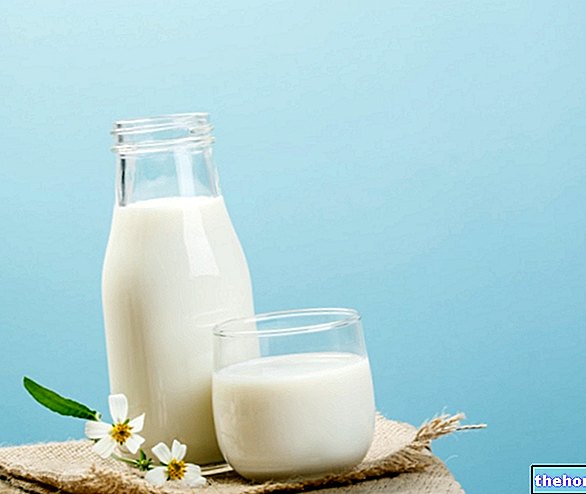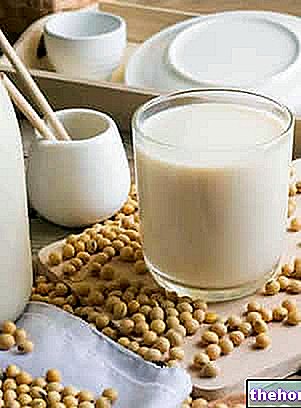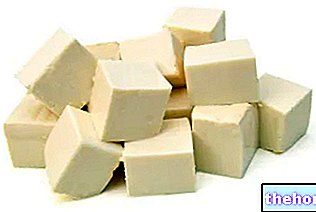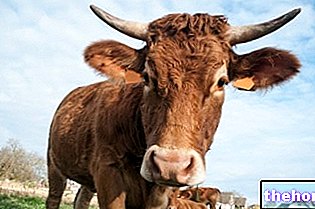The drinking milk is "the product obtained from milking regular, uninterrupted And complete of animals in good health and nutrition"; moreover, where not otherwise specified (on the label), from a legislative and product point of view," milk "means exclusively that of the female bovine, better known as cow or vaccine (R.D. 9/5/29 n. 994 and related amendments).
Abuse of milk
Milk has a liquid consistency, so it is not surprising that it is also used as a drink;

Despite being an excellent nutritional source of calcium, phosphorus, high biological value proteins and riboflavin (vitamin B2), milk should be consumed more scrupulously than just mentioned; an excess of its use could affect not only the balance. caloric making it positive (therefore fattening), but also on the total daily cholesterol intake (which should not exceed 300mg) and on the balance of fatty acids (with a percentage increase of saturated ones).
In this regard, the food industry provides various types of cow's milk that differ from each other for the different content in triglycerides and cholesterol; they are respectively whole milk, semi-skimmed milk and skimmed milk (recently the fattest form of milk, the "raw" one, has been reintroduced, but due to its relative perishable nature, its diffusion has not yet reached the levels of "traditional" products).
Milk skimming
Milk skimming is a PHYSICAL (and not chemical) process, useful for the separation of the fat component from the hydrophilic one, which DOES NOT alter the structure of the lipid globules. Milk has a very complex structure; it is a suspension, an emulsion, a solution, a dispersion and a colloidal solution. It contains many nutrients which, interacting with each other and in the presence of water, maintain their equilibrium to favor their liquid consistency. To extract the lipid component from whole milk, the industry uses a technique called centrifugation; this industrial process uses machines that exploit the "centrifugal force" up to a maximum of 6500- 7000 rpm, when the water and hydrophilic solutes are separated from the fat and lipophilic components. partially skimmed milk (1,5-1,8g / l of lipids) and skimmed milk (0,3% of lipids).
Nutritional content of cow's milk: whole, partially skimmed and skimmed
Obviously, the nutritional and above all the caloric intake vary considerably according to the skimming.
Considerations
From the values shown in the table above it emerges that:- The energy intake of milk varies in relation to the degree of skimming; ultimately, by reducing the lipid content, the total calories also decrease at the same time (highlighted in yellow)
- By decreasing the overall lipids, the portion of saturated fatty acids which are the most numerous in milk is also significantly limited (highlighted in yellow)
- Together with energy fats, the amount of total cholesterol is also reduced with the skimming (highlighted in yellow)
- On the other hand, we remind you that in centrifugation there is no selectivity, therefore, in addition to saturated fats and cholesterol, essential fatty acids are also eliminated (highlighted in green)
- Note how the chemical analysis of food, at times, can be quite inaccurate or inconsistent; almost all the statements referring to water-soluble compounds INCREASE with skimming, as the aqueous portion is slightly higher than that of a fatter milk and , on the contrary, the lipophilic compounds are proportional to the percentage of total fats. However, it is observed that some values (highlighted in purple) do not seem to respect any of these rules; this discrepancy could be justified by an "analytical imprecision or by the randomness in the choice of the analyzed samples.
Which milk to choose? Better whole or skim?
The choice of milk to consume EVERY day is quite simple; in the absence of cholesterol dysmetabolisms (possibly aggravated by concomitant hypertriglyceridemias) or, even worse, of vascular suffering (obstructive atherogenesis), the choice of milk subordinates exclusively to personal taste. On the contrary, if the cholesterolemia is high, it could be useful to use a partially or totally skimmed product, in order to further reduce the amount of saturated fatty acids and cholesterol present in the diet.
Milk, Dairy Products and Cheeses Asiago Brie Burrata Caciocavallo Rennet Camembert Cheddar Milk Cream Crescenza Emmental Feta Milk Flakes Fontina Herbal Cheeses Lean Cheeses Cheeses rich in calcium Gorgonzola Gouda Grana Padano Gruyere Kéfalair Adapted milk Artificial milk Condensed milk Asphyxiated milk Goat's milk Sheep's milk Rice milk Soy milk Powdered milk and concentrated milk Skimmed and semi-skimmed milk Lactose-free milk Milk Vegetable milk Dairy products Lerdammer Mascarpone Montasio Buffalo mozzarella Mozzarella Whipped cream Cooking cream Fresh cream Parmigiano Reggiano Pecorino Philadelphia Primo Sale Provolone Ricotta Robiola Roquefort Scamorza Sottilette Squacquerone Taleggio Tomino Yogurt OTHER ARTICLES MILK AND DERIVATIVES Categories Alcoholic foods Meat Cereals and derivatives Sweeteners Sweets Offal Fruit Dried fruit Milk and derivatives Legumes Oils and fats Fish and fishery products Cold cuts S pezie Vegetables Health recipes Appetizers Bread, Pizza and Brioche First courses Second courses Vegetables and Salads Sweets and Desserts Ice creams and sorbets Syrups, liqueurs and grappa Basic preparations ---- In the kitchen with leftovers Carnival recipes Christmas recipes Light diet recipes Women's Day, Mum, Dad Recipes Functional Recipes International Recipes Easter Recipes Recipes for Celiacs Recipes for Diabetics Recipes for Holidays Recipes for Valentine's Day Recipes for Vegetarians Protein Recipes Regional Recipes Vegan Recipes




























